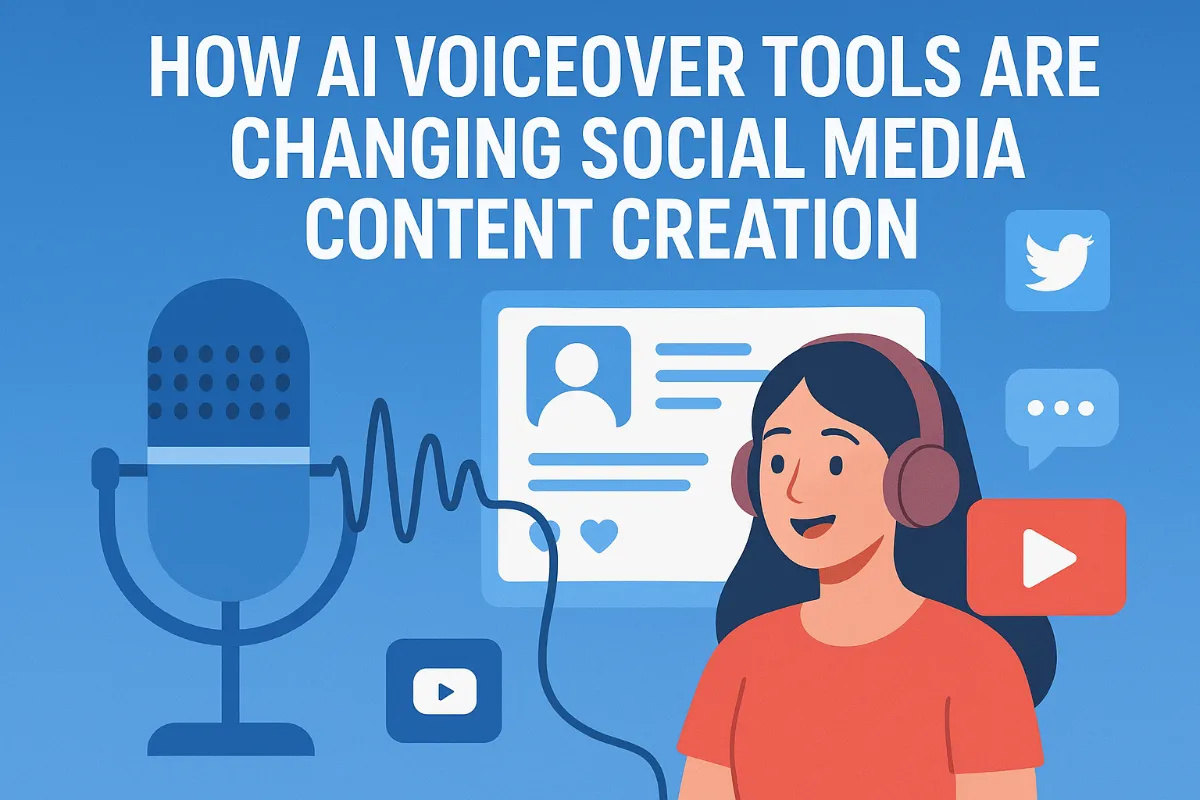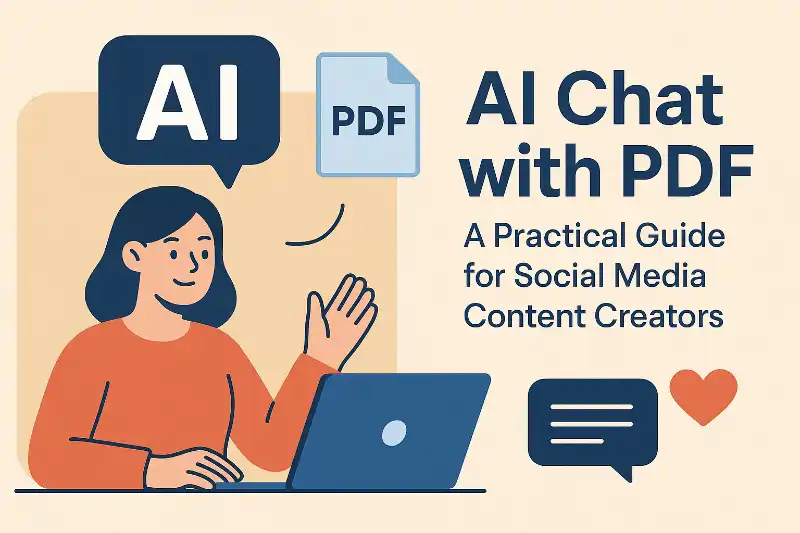Predictive Social Media Analytics: A Content Creator's Crystal Ball
Understanding Predictive Analytics for Social Media
Imagine knowing exactly what your audience wants before they even do. That's the power of predictive analytics, and it's changing the game for content creators.
Predictive analytics uses historical data, statistical algorithms, and machine learning to forecast future social media trends and outcomes. Think of it as using data to anticipate what will resonate with your audience. Predictive analytics for social media analytics tools enables businesses to forecast trends, user behavior, and campaign performance. Some tools that offer these predictive capabilities include Hootsuite Insights, Sprout Social, and IBM Watson Analytics, which leverage historical data and ai to forecast future outcomes.
It's not just about looking at past performance. It is about analyzing likes, shares, comments, and demographics to anticipate audience behavior. The ultimate goal is to move from reactive content strategies to proactive ones, crafting content that aligns with audience interests.
Predictive analytics enables data-driven content creation, which leads to higher engagement. This is achieved through optimizing content scheduling for maximum visibility. For example, a fashion retailer can use predictive analytics to forecast trending styles based on Instagram hashtags and influencer posts.
It also improves ad targeting and ROI. This helps content creators anticipate trends rather than react to them. The goal is crafting content that resonates with your target audience and aligns with broader business goals.
Old analytics focus on past performance, like likes, shares, and comments, without deeper insights. Predictive analytics uses ai to forecast future trends and user behavior. According to a blog post on contentbase.com, predictive models can help determine which posts will garner the most engagement or when your audience is most active.
Old analytics are manual and slow, while predictive analytics is automated and fast. Ultimately, old analytics are limited in accuracy, while predictive analytics offers higher accuracy with ai.
With a clearer understanding of predictive analytics, the next step is diving into how it transforms content creation.
How Predictive Analytics Identifies Trends and Behaviors
Predictive analytics is like having a crystal ball for content creation, allowing you to anticipate what your audience wants before they even know it themselves. How exactly does this work?
Predictive analytics excels at analyzing real-time and historical data to uncover patterns, helping you forecast future trends. This involves identifying trending hashtags, topics, and content formats that are gaining traction. By keeping an eye on these indicators, content creators can capitalize on trends before they peak, ensuring their content remains relevant and engaging.
Predictive analytics helps brands understand customer preferences and deliver personalized experiences, fostering loyalty and satisfaction.
This technology also helps determine which demographics respond best to specific content, allowing for hyper-targeted marketing strategies. Understanding these preferences allows you to tailor content for maximum impact.
Predicting the best times to post for maximum engagement is another key benefit. By analyzing user behavior, predictive analytics can identify optimal posting times, ensuring your content reaches the widest possible audience when they are most active.
Consider a fashion retailer aiming to predict trending styles. By analyzing Instagram hashtags and influencer posts, they can forecast upcoming trends. A tech company can gauge public sentiment towards a new product launch using sentiment analysis. A food brand can proactively address negative tweets to manage potential PR crises.
With these insights, content creators can move from reactive strategies to proactive ones, creating content that truly resonates with their audience.
Now that you know how predictive analytics identifies trends and behaviors, let's explore how you can implement these insights into your content strategy.
Implementing Predictive Analytics: A Step-by-Step Guide
Ready to transform your social media strategy? Implementing predictive analytics can give you the edge you need to anticipate trends and connect with your audience on a deeper level.
First, clarify what you want to achieve. Are you aiming to increase engagement, drive website traffic, or generate leads? Align these goals with your overall business objectives to ensure your social media efforts contribute to the bigger picture.
For instance, a retailer might aim to improve their engagement rate by 15% in the next quarter through targeted social media campaigns.
Next, gather relevant data from various sources. This includes social media platforms, web analytics, and CRM systems. Clean and organize this data to ensure accuracy. This involves removing duplicates and handling missing values, which is crucial for reliable predictions.
Now, select appropriate predictive models based on your objectives. Options include regression analysis, decision trees, and neural networks. Regression analysis is a statistical method used to estimate the relationship between a dependent variable and one or more independent variables, often used for forecasting continuous values. Decision trees are tree-like structures where internal nodes represent tests on an attribute, branches represent the outcome of the test, and leaf nodes represent class labels, useful for classification and regression tasks. Neural networks are complex computational models inspired by the structure of the human brain, capable of learning intricate patterns and are often used for highly complex prediction tasks. Use historical data to train and refine these models. Ensure the models are rigorously tested using testing data to guarantee reliability and accuracy. This ensures your predictions are as sound as possible.
With these steps in place, you'll be well on your way to leveraging predictive analytics. Next, we'll explore how to use these insights to optimize your content strategy and scheduling.
Optimizing Your Content Strategy with Predictive Insights
Predictive insights aren't just about forecasting; they're about fine-tuning every aspect of your content. How can you leverage these insights to create a social media strategy that truly resonates?
Predictive analytics can dissect your engagement history to reveal the most effective content formats. Are your videos generating more buzz than articles, or are infographics the secret sauce to your success? By understanding which content types resonate most with your audience, you can prioritize creating similar content.
- Example: If your data shows that infographics consistently outperform other content formats, shift your focus to creating more visually engaging content.
- Example: A healthcare provider might discover that short, animated videos explaining complex medical topics receive higher engagement than lengthy articles.
Timing is everything in the fast-paced world of social media. Predictive analytics can help you determine the best times to post based on user activity patterns. Ensuring your content reaches the widest possible audience when they're most active is crucial.
- Example: A local restaurant might find that posting lunch specials at 11 AM and dinner deals at 5 PM yields the best results.
- Example: A financial services company can use predictive analytics to identify the optimal times to share market updates and investment tips.
Generic content often gets lost in the noise. Crafting personalized messages based on audience demographics and behavior, however, can significantly boost engagement. Using ai to generate personalized content at scale allows you to connect with your audience on a deeper level.
- Example: An eco-friendly brand can tailor ad copy to align with the values of environmentally conscious consumers, highlighting sustainable practices and ethical sourcing.
- Example: A retail company can use predictive analytics to personalize product recommendations based on a customer's past purchases and browsing history.
By using predictive insights, you can move from reactive content creation to a proactive, data-driven approach. This ensures your content is not only relevant but also perfectly timed and tailored to your audience's preferences. The next step involves leveraging predictive models for targeted marketing, ensuring your content reaches the right people.
Leveraging Predictive Models for Targeted Marketing
Predictive models are like having a marketing superpower, allowing you to target the right people with the right message at the right time. How can content creators leverage these models to maximize their marketing impact?
Predictive analytics helps you understand your audience on a deeper level. By analyzing user behavior, browsing habits, and demographic data, you can identify audiences most likely to engage with your content.
This goes beyond basic demographics, diving into the why behind their actions. This allows for creating hyper-targeted marketing campaigns that resonate with specific user segments.
For instance, an eco-friendly brand can target environmentally conscious consumers by highlighting sustainable practices and ethical sourcing.
Social9 helps you create engaging social media content with ai-powered tools. They offer AI-Powered Generation, Smart Captions, Hashtag Suggestions, Content Templates, and 24/7 Support. These features contribute to predictive analytics by helping to identify trending topics and optimal content formats, thus improving content resonance and engagement. Visit Social9 to start creating smarter content today!
Effective ad spending is crucial for content creators. Predictive models can help target ads to the right users at the right time, maximizing your marketing ROI.
This is achieved by analyzing which users are most likely to convert based on their past behavior. This leads to improved click-through rates and conversion rates, ensuring you get more bang for your marketing buck.
By using predictive analytics, content creators can move from broad marketing efforts to highly targeted campaigns. This not only saves money but also increases the effectiveness of your marketing efforts.
With a better understanding of how to leverage predictive models for targeted marketing, the next step involves measuring campaign success with predictive insights.
Measuring Success and Overcoming Challenges
Are you ready to measure the real impact of your predictive analytics strategies? It's time to dive into the metrics that matter and tackle the challenges head-on.
To truly gauge the effectiveness of your predictive analytics, focus on metrics that directly reflect your goals. These metrics provide actionable insights into how well your strategies are performing.
- Click-through rates (CTR): This measures how often people click on your content after seeing it. A higher CTR indicates that your content resonates with your audience, making them more likely to engage further.
- Cost per acquisition (CPA): Understanding how much it costs to acquire a new customer helps optimize your ad spending. Lowering CPA means your marketing efforts are becoming more efficient.
- Engagement rate: This percentage reflects how actively involved your audience is with your content through likes, shares, and comments. A high engagement rate shows that your content is captivating and relevant.
- Conversion rate: This tracks the percentage of users who complete a desired action, such as making a purchase or signing up for a newsletter. Improving this rate directly boosts your ROI.
- Website traffic: Monitoring website traffic helps you understand how effectively your social media efforts drive people to your site. Increased traffic can lead to more leads and sales.
Data quality is the backbone of reliable predictive analytics. Without accurate, complete, and representative data, your predictions can be misleading.
- Ensuring data is accurate, complete, and representative involves rigorous data validation processes.
- Implementing data cleaning and validation processes helps remove errors, duplicates, and inconsistencies.
- Regularly monitoring data quality is crucial to catch and correct issues as they arise.
In today's data-driven world, privacy is paramount. It's essential to handle user data responsibly and ethically.
- Adhering to data protection laws like GDPR and CCPA is non-negotiable. Companies must ensure they comply with all relevant regulations to avoid legal repercussions and maintain customer trust.
- Prioritizing user privacy means being transparent about data collection and usage.
- Being transparent about data collection and usage builds trust with your audience.
Without transparency and legal rules, predictive analytics risks bias, forced interpretations, and recommendations that could hurt society.
With a clear understanding of the key metrics and challenges, you're well-equipped to refine your predictive analytics strategies. Next, we’ll explore the tools and platforms that can help you implement predictive analytics effectively.
Tools and Platforms for Predictive Social Media Analytics
Ready to peek into the future of your social media campaigns? Predictive social media analytics isn't just a trend, it's a necessity for content creators aiming to stay ahead.
Choosing the right tools can make all the difference. Here are some top platforms to consider for your predictive social media analytics needs:
- Google Analytics: Ideal for tracking user behavior and website traffic, providing a comprehensive view of how social media efforts translate into tangible results. By understanding traffic sources and user engagement, content creators can refine their strategies for better ROI.
- Hootsuite Insights: A robust option for monitoring social media performance, offering predictive analytics features to track trends and engagement metrics. This helps content creators understand what's working and what's not, enabling data-driven adjustments to their content strategy.
- Sprout Social: Excellent for audience engagement and trend analysis, providing insights into audience behavior and campaign outcomes. With Sprout Social, content creators can identify patterns and trends to optimize their content for maximum impact.
- IBM Watson Analytics: For those seeking advanced AI-driven predictive analytics, IBM Watson Analytics offers powerful tools to analyze social media data and generate actionable insights. This allows for deeper dives into audience sentiment and predictive modeling of future trends.
AI-powered suites offer advanced capabilities for predictive analytics. These platforms can help content creators automate and optimize their marketing efforts:
- Alembic Technologies: This platform uses cross-domain algorithms and causal AI to link causal chains together, predicting insights from marketing data and allowing for proactive adjustments to marketing campaign strategies. This proactive approach allows for more effective resource allocation and campaign refinement.
- Facebook Resources: Take advantage of the resources offered by Facebook to maximize campaign results and optimize for specific business goals. These tools provide valuable data-driven insights to enhance targeting and campaign performance. For example, Facebook's ad platform uses predictive analytics to forecast campaign performance and identify audiences most likely to convert.
- Automated Ad Buying: Also known as programmatic media buying, leverages data analytics and algorithms to make real-time adjustments for better advertising performance. This ensures ads are shown to the right audience at the right time, maximizing ROI. It uses predictive models to forecast ad performance and optimize bidding strategies.
The field of predictive analytics is constantly evolving, with several emerging trends poised to shape the future of content creation:
- AI-powered analytics is enhancing accuracy by automating complex tasks and providing deeper insights into user behavior. This allows for more precise targeting and personalized content creation. For content creators, this means better predictions on what content will perform best and who to target.
- Real-time predictions are enabling immediate decision-making, allowing content creators to adjust their strategies on the fly based on the latest data. This responsiveness is crucial in today's fast-paced social media landscape. Content creators can react instantly to emerging trends or shifts in audience sentiment.
- Natural Language Processing (NLP) is improving the analysis of text-based data, such as comments and reviews, providing a deeper understanding of audience sentiment. This enables content creators to tailor their messaging to better resonate with their audience. It helps predict how audiences will react to certain messaging.
- Integration with IoT is providing a more comprehensive view of user behavior, incorporating data from various devices and touchpoints. This holistic approach allows for a more accurate and nuanced understanding of audience preferences and behaviors. For content creators, this means a richer dataset for predicting what content will be most effective across different user contexts.
Choosing the right tools and staying abreast of emerging trends will empower you to harness the full potential of predictive analytics. With these insights, content creators can transform their social media strategies, creating more engaging and effective content.





